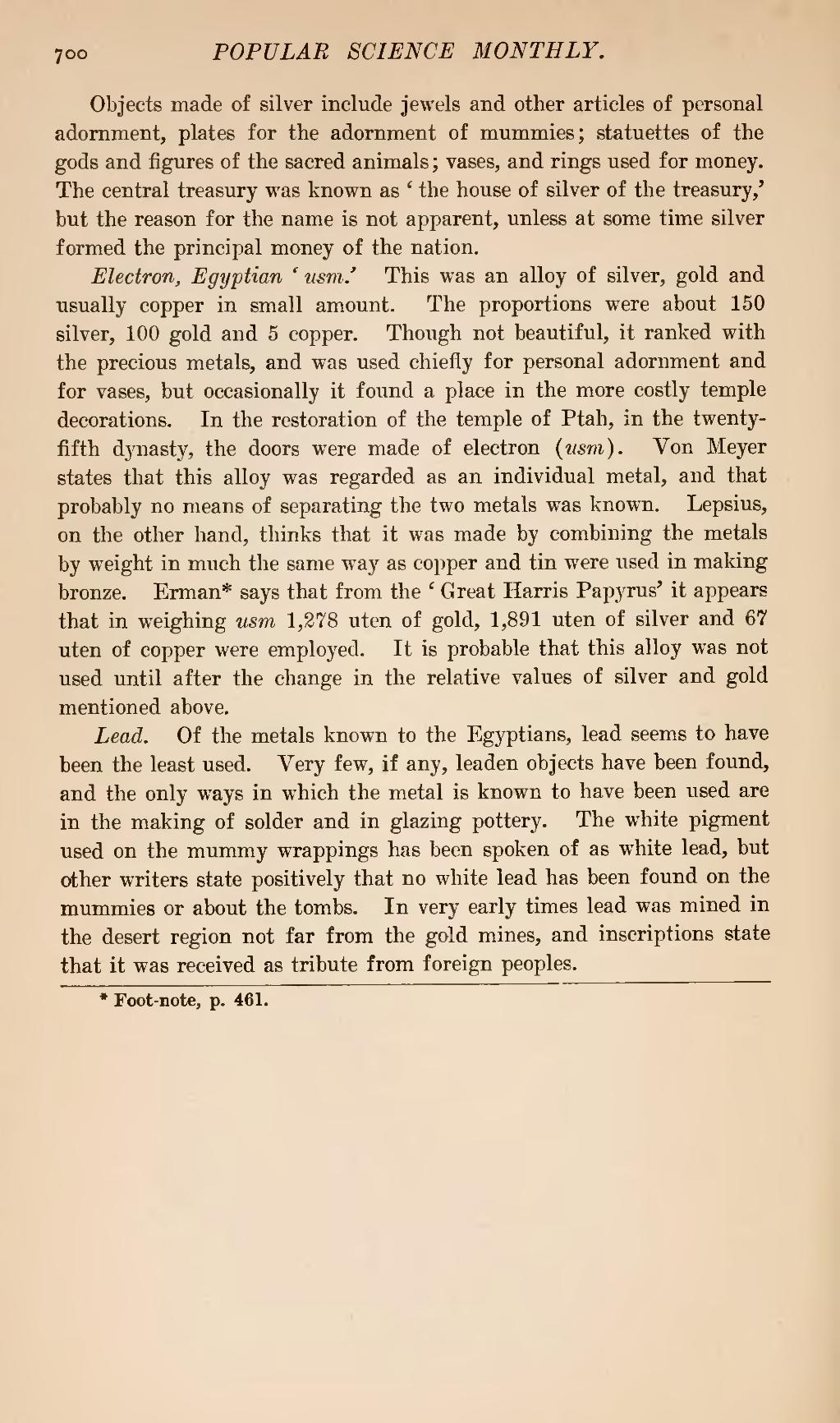Objects made of silver include jewels and other articles of personal adornment, plates for the adornment of mummies; statuettes of the gods and figures of the sacred animals; vases, and rings used for money. The central treasury was known as 'the house of silver of the treasury,' but the reason for the name is not apparent, unless at some time silver formed the principal money of the nation.
Electron, Egyptian 'usm.' This was an alloy of silver, gold and usually copper in small amount. The proportions were about 150 silver, 100 gold and 5 copper. Though not beautiful, it ranked with the precious metals, and was used chiefly for personal adornment and for vases, but occasionally it found a place in the more costly temple decorations. In the restoration of the temple of Ptah, in the twenty-fifth dynasty, the doors were made of electron (usm). Von Meyer states that this alloy was regarded as an individual metal, and that probably no means of separating the two metals was known. Lepsius, on the other hand, thinks that it was made by combining the metals by weight in much the same way as copper and tin were used in making bronze. Erman[1] says that from the 'Great Harris Papyrus' it appears that in weighing usm 1,278 uten of gold, 1,891 uten of silver and 67 uten of copper were employed. It is probable that this alloy was not used until after the change in the relative values of silver and gold mentioned above.
Lead. Of the metals known to the Egyptians, lead seems to have been the least used. Very few, if any, leaden objects have been found, and the only ways in which the metal is known to have been used are in the making of solder and in glazing pottery. The white pigment used on the mummy wrappings has been spoken of as white lead, but other writers state positively that no white lead has been found on the mummies or about the tombs. In very early times lead was mined in the desert region not far from the gold mines, and inscriptions state that it was received as tribute from foreign peoples.
- ↑ Foot-note, p. 461.
